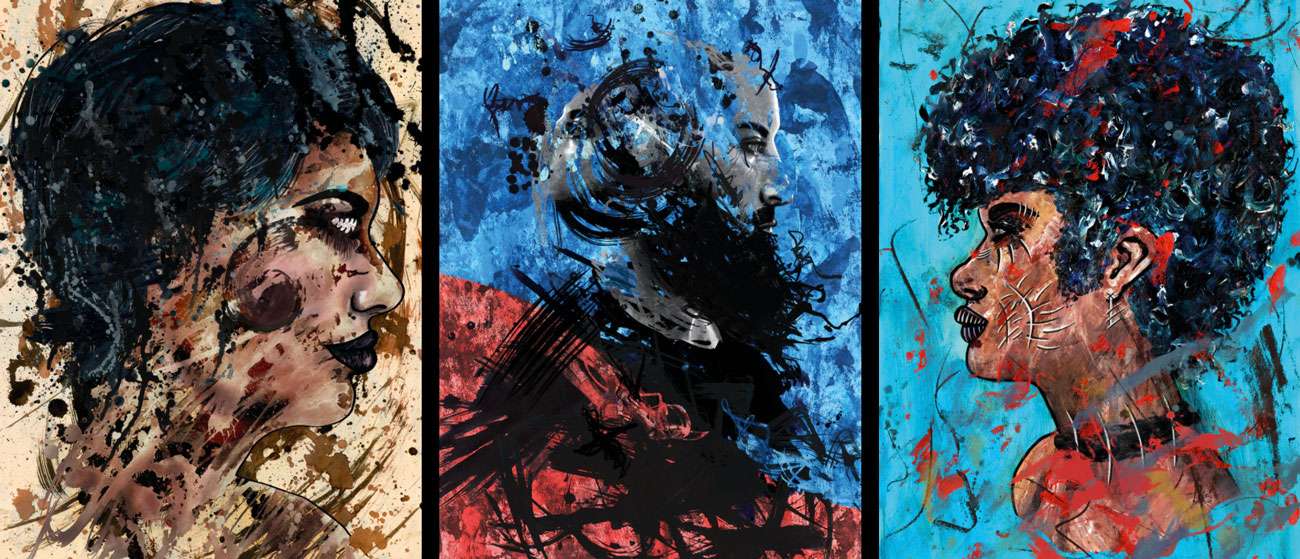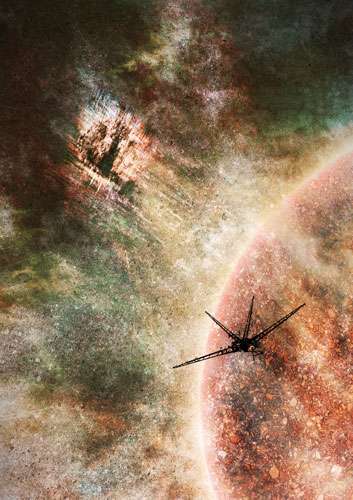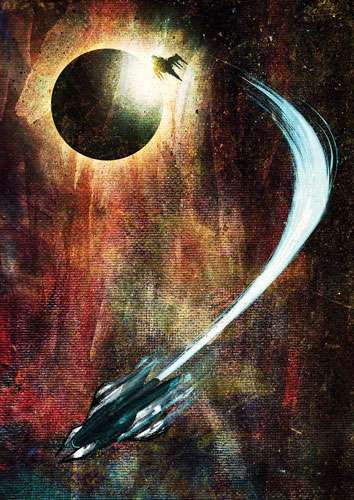
Artwork is often categorised by the media used to create it. You might read a book about the greatest painters of the 20th century in order to inspire your own painting. Similarly a genre of music may appeal whereas another you’ve just never gotten along with. So in a descriptive sense such categorisation can be helpful. However, it can also be something of a restriction. The artwork I make involves a computer, so it can often fall under the label of “digital art”. But I’d like to talk about my process for making artwork and what I’ve learned from years spent experimenting with different media to show that perhaps the digital element is no more significant than any other.
Most of my work isn’t an attempt to depict a particular subject or character but rather explore the emotional way we view others and the world around us. I consider how I can create a piece of work that presents a certain vision to the viewer and challenges them to respond. You can never know how somebody is going to react to seeing your work, but if you’re bold enough in your approach then you’ve the best chance of a strong reaction either way.
© The Expedition
Main Photo: © Teeth, Self and Paint
Once I’ve got an idea in mind the first step is to sketch it. This can be done digitally with a graphics tablet but most often I work with pencil on cartridge paper to rough out the initial stages. I’m keen to not add too much detail at this point. I find the more detail you add the more cautious you are when it comes to developing your idea and this can create a stifling tone for the whole process. You want to give yourself enough detail so you don’t have to spend time working out proportions later on but not so much that if you accidentally go over a line you fear you’ll be totally lost!
The best way of improving your sketching ability is just repetition. Drawing is hard, you can’t expect to be good at it without practice. This doesn’t mean though that your practice has to be boring. Indeed if your practice is boring, you won’t do it and you won’t improve. For me the best way is to produce quick studies. Not only will this get you in the rhythm of working quickly while translating what you see and your thoughts onto paper, but you’ll also get used to making mistakes. The more mistakes you make the better. All the more confident you will be that when it comes to a “serious” piece of work, if you get something wrong you’ll probably be able to fix it.
I try to carry this approach with me in the next stage, which is usually painting with acrylics and other loose media. Again, I like to prioritise speed and dynamic mark making. It’s easy to sit there and spend a lot of time trying to mix the perfect shade or to be so determined to do a good job that you end up just looking at the paper, afraid to commit. I find that getting paint on paper in any fashion immediately makes things easier. You can always adjust tones later-a colour often appears differently than it does sitting on the palette but you won’t know until you give it a go.
© Villain
Brush wise I like to go for mid range options. This can be a good balance when you want brushes that will last a decent amount of time if looked after but are at a price point where bent bristles aren’t the end of the world! The reason I go for Acrylic paint over Oils is that they dry quicker- I don’t like to wait around before adding layers and you can really build up the texture in a short period of time. Oils have a reputation for being the “proper” artist’s option, but I think you should make your choice based on which properties are best for you.
Once I’ve got the painting to a stage I’m happy with, I’ll let it dry on the easel and have a think about what I’d like to add to it digitally. It can be tough to picture the development of an image but once I have a general idea I can embark on the next step. This is a fun part- I’ll create pages and pages of paint splashes, textures, brush strokes and various marks to scan along with the painting and utilise in Photoshop.
At this point the digital and traditional media really combine. Working with my graphics tablet I’ll adjust colours, paint over areas and work in the scanned imagery. It’s actually a very similar process to collage work. I try to avoid overwhelming the original painting but do my best to enhance it. Any scanned imagery I don’t use can often find a home in a future project and I’ve got a whole library of them saved ready to choose from if necessary.
© Hide and Seek
Deciding when the work is “finished” is a battle for all artists but this genre of mixed media work lends itself well to re-editing at a later date. Once I print the digital image I’ll often add hand embellishment with acrylic medium to bring out the texture of the brush strokes. I’ve even experimented with transferring the final image onto wooden panels and the grain really enhances it’s dramatic quality.
I hope that I’ve managed to give you a window into my working practices and perhaps some ideas for your own work or inspiration to have a go and see what happens. My goal is to show that all genres of art have transferrable skills and I believe the future of art is in the way in which different media and techniques can be combined to create work that carves out its own space.
For more of my digital work please go to: willclareart.com
You can also follow me on Instagram – @willclareart or follow me on Facebook at – facebook.com/WillClareArt














